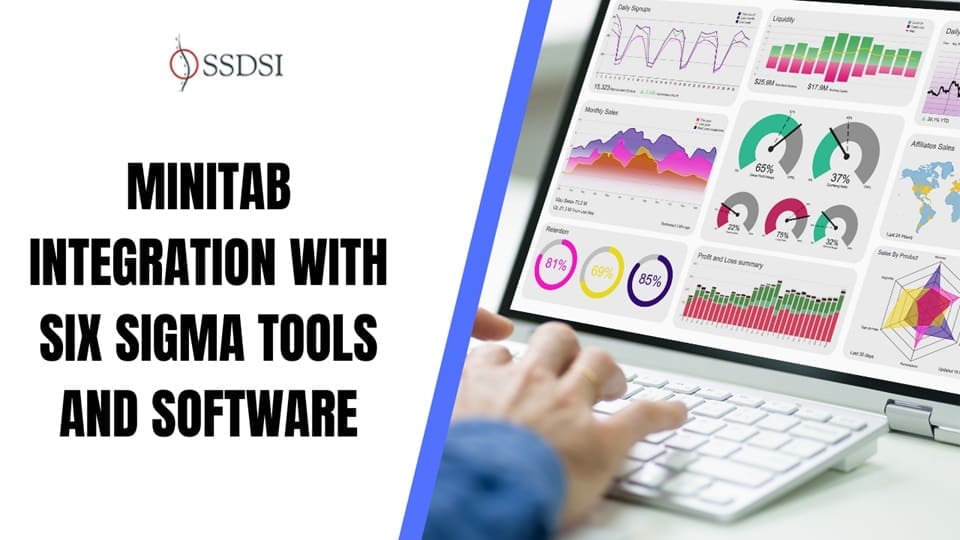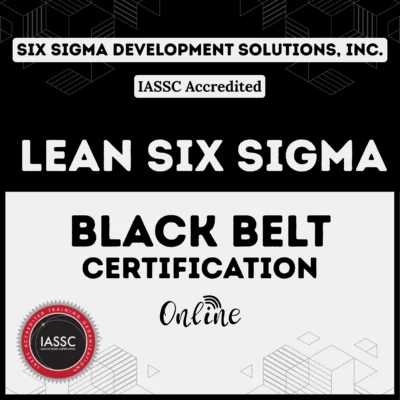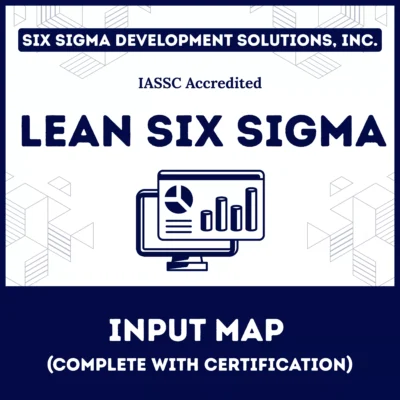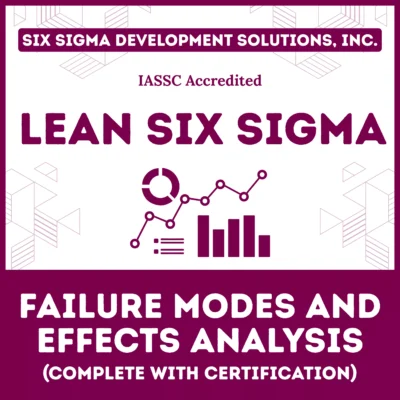Minitab is designed specifically for the needs of Six Sigma professionals, providing a simple, effective way to input statistical data, manipulate that data, identify trends and patterns, and then extrapolate answers to the problem at hand. This foundation makes it the cornerstone of most Six Sigma implementations, but true power emerges when connected to broader quality management systems.
Modern organizations demand integrated solutions that eliminate data silos and streamline analysis workflows. Consequently, successful Six Sigma deployment requires strategic planning around software integration from project inception through solution implementation.
Table of contents
- Why Integrate Minitab with Six Sigma Tools?
- Strategies for Integrating Minitab with Six Sigma Tools
- 1. Integrating Minitab with Microsoft Excel
- 2. Leveraging Minitab Engage for Project Management
- 3. Combining Minitab with Lean Six Sigma Software
- 4. Enhancing Visualization with Business Intelligence Tools
- 5. Using R or Python for Advanced Analysis
- 6. Integrating with SPC Software
- Best Practices for Seamless Integration
- Challenges and Solutions
- Final Words
- FAQs on Integrating Minitab with Six Sigma Tools and Software
- Related Articles
Why Integrate Minitab with Six Sigma Tools?
Minitab’s strength lies in its ability to perform advanced statistical analysis, generate insightful visualizations, and support the DMAIC (Define, Measure, Analyze, Improve, Control) methodology. However, Six Sigma projects often require collaboration across multiple tools to address different aspects of process improvement, such as project management, data visualization, or lean methodologies. By integrating Minitab with other software, you can:
- Streamline Workflows: Combine data analysis with project tracking and reporting.
- Enhance Insights: Use complementary tools to visualize and interpret Minitab’s outputs.
- Boost Efficiency: Save time by automating data transfers and reducing manual work.
- Improve Collaboration: Share data seamlessly across platforms for team alignment.
Let’s explore how to make this integration happen effectively.
Key Six Sigma Tools for Integration
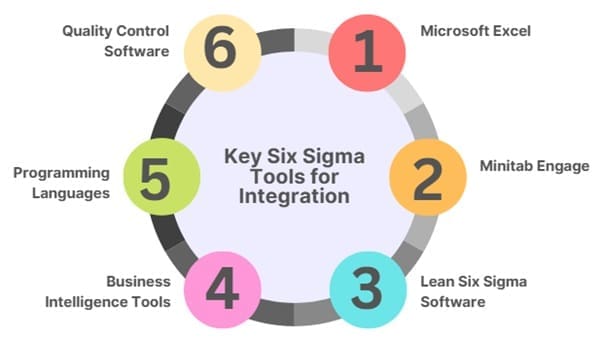
To understand how Minitab fits into the Six Sigma ecosystem, let’s first look at the types of tools commonly used alongside it:
- Microsoft Excel: A versatile tool for data collection, basic analysis, and visualization.
- Minitab Engage: A project management platform designed for Six Sigma initiatives.
- Lean Six Sigma Software: Tools like iGrafx or SigmaXL for process mapping and lean analysis.
- Business Intelligence Tools: Power BI or Tableau for advanced data visualization.
- Programming Languages: R and Python for custom statistical modeling.
- Quality Control Software: SPC (Statistical Process Control) tools like Statgraphics.
Each of these tools brings unique capabilities, and integrating them with Minitab can amplify your project outcomes. Let’s break down the integration process.
Public, Onsite, Virtual, and Online Six Sigma Certification Training!
- We are accredited by the IASSC.
- Live Public Training at 52 Sites.
- Live Virtual Training.
- Onsite Training (at your organization).
- Interactive Online (self-paced) training,
Strategies for Integrating Minitab with Six Sigma Tools
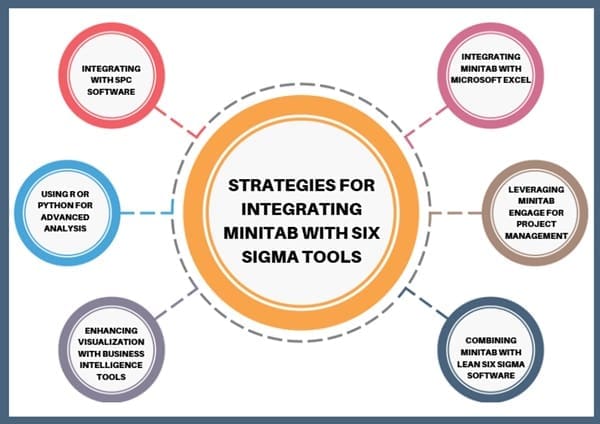
1. Integrating Minitab with Microsoft Excel
Excel is often the starting point for data collection in Six Sigma projects. Minitab complements Excel by offering advanced statistical capabilities that Excel lacks, such as regression analysis or ANOVA. Here’s how to integrate the two:
- Data Import/Export: Minitab supports direct import of Excel files (.xlsx, .xls). Simply go to File > Open Worksheet in Minitab and select your Excel file. To export Minitab results back to Excel, use File > Save Worksheet As and choose Excel format.
- Dynamic Data Exchange: Use Minitab’s automation features to pull real-time data from Excel. For example, Minitab’s macros can automate repetitive tasks, like importing updated datasets.
- Best Practice: Ensure data in Excel is clean (no blank rows, consistent formats) before importing to avoid errors in Minitab. Use Excel’s data validation tools to maintain quality.
Example: Imagine you’re analyzing defect rates in a manufacturing process. You collect raw data in Excel, import it into Minitab for control charts and hypothesis testing, then export the results back to Excel for team reporting.
Also Read: Are there Free Excel Alternatives to Minitab?
2. Leveraging Minitab Engage for Project Management
Minitab Engage is purpose-built for Six Sigma project management, offering tools like DMAIC roadmaps, fishbone diagrams, and process maps. Integrating Minitab with Minitab Engage creates a cohesive environment for data analysis and project execution.
- How It Works: Minitab Engage allows you to store project data and statistical outputs from Minitab in a centralized platform. You can link Minitab’s statistical reports directly to Engage’s project dashboards for real-time tracking.
- Benefits: This integration ensures that statistical insights inform project decisions, such as identifying root causes or tracking improvements. Engage’s dashboards also provide instant reporting on metrics like project savings or duration.
- Setup: Export Minitab results as PDFs or images and upload them to Engage. Alternatively, use Engage’s API for automated data syncing (consult Minitab’s support for API setup).
Pro Tip: Use Minitab Engage’s pre-populated Lean Six Sigma templates to align your Minitab analysis with project goals, ensuring consistency across phases.
3. Combining Minitab with Lean Six Sigma Software
Lean Six Sigma tools like iGrafx, SigmaXL, or JMP focus on process mapping, value stream analysis, and lean principles. Minitab integrates with these tools to bridge statistical analysis with process optimization.
- Process Mapping with iGrafx: Export Minitab’s process capacapability analysis (e.g., Cp, Cpk metrics) and import them into iGrafx to visualize process bottlenecks. Use CSV files for seamless data transfer.
- SigmaXL Integration: SigmaXL, an Excel-based Six Sigma tool, complements Minitab for smaller projects. Copy Minitab’s output tables (e.g., Pareto charts) into SigmaXL for further lean analysis.
- Data Compatibility: Ensure consistent data formats (e.g., CSV or Excel) when moving between platforms. Standardize variable names and units to avoid confusion.
Case Study: A healthcare provider used Minitab to analyze patient wait times, then imported the results into iGrafx to create a value stream map, identifying inefficiencies in scheduling processes.
4. Enhancing Visualization with Business Intelligence Tools
Business intelligence (BI) tools like Power BI or Tableau excel at creating interactive dashboards. Integrating Minitab with these tools enhances data presentation for stakeholders.
- How to Integrate: Export Minitab’s graphs (e.g., control charts, scatterplots) as images or data tables (CSV format) and import them into Power BI/Tableau. Use BI tools to create dynamic visualizations based on Minitab’s outputs.
- Why It Matters: BI tools make complex statistical results accessible to non-technical audiences, improving buy-in for Six Sigma initiatives.
- Best Practice: Use Minitab’s Graph > Save Graph As feature to export high-quality visuals. In Power BI, connect to Minitab’s CSV outputs via Get Data > Text/CSV.
Example: A logistics company used Minitab to analyze delivery time variability, then visualized the results in Tableau to present trends to executives, driving faster decision-making.
5. Using R or Python for Advanced Analysis
For Six Sigma practitioners with programming skills, R and Python offer flexibility for custom statistical models. Minitab integrates with these languages to handle complex analyses beyond its built-in capabilities.
- R Integration: Minitab supports R integration through its R Integration for Minitab feature (available in newer versions). This allows you to run R scripts directly within Minitab, leveraging packages like ggplot2 for visualization or caret for predictive modeling.
- Python Integration: Use Python’s pandas library to manipulate Minitab’s CSV outputs or scikit-learn for machine learning. Export Minitab data to CSV, process it in Python, and re-import results if needed.
- Setup: Install Minitab’s R integration package or use Python’s minitab library (third-party) for direct interaction. Ensure version compatibility to avoid errors.
Pro Tip: Use R or Python for advanced regression analysis or time-series forecasting, then import results into Minitab for Six Sigma-specific tools like control charts.
6. Integrating with SPC Software
Statistical Process Control (SPC) tools like Statgraphics or QI Macros are often used alongside Minitab for real-time quality monitoring. Integration focuses on sharing data and outputs.
- Data Sharing: Export Minitab’s SPC charts (e.g., Xbar-R charts) as CSV files and import them into Statgraphics for additional analysis, such as multivariate control charts.
- Automation: Use Minitab’s macros to automate data exports to SPC tools, reducing manual work.
- Best Practice: Align control limits and metrics across platforms to ensure consistency in quality monitoring.
Example: A manufacturing firm used Minitab to generate control charts for production data, then imported the results into QI Macros for real-time monitoring on the shop floor.
Best Practices for Seamless Integration
To maximize the benefits of integrating Minitab with other Six Sigma tools, follow these best practices:
- Standardize Data Formats: Use CSV or Excel for data transfers to ensure compatibility across platforms.
- Automate Where Possible: Leverage Minitab’s macros or APIs (e.g., Minitab Engage’s API) to automate data imports/exports, saving time.
- Validate Data Quality: Clean and validate data before transferring to avoid errors in analysis.
- Document Workflows: Create clear documentation for integration processes to ensure team alignment.
- Train Your Team: Invest in training for Minitab and complementary tools to improve adoption and efficiency.
Also Read: 5 Simple Steps to Conducting a Non-Normal Capability Analysis in Minitab
Challenges and Solutions
Integration isn’t without challenges. Here are common issues and how to address them:
- Data Compatibility: Mismatched formats can cause errors. Solution: Use CSV as a universal format and double-check variable types.
- Learning Curve: Team members may struggle with multiple tools. Solution: Offer targeted training or use Minitab’s user-friendly interface as a starting point.
- Cost Considerations: Licensing for tools like Minitab Engage or BI software can be expensive. Solution: Evaluate ROI and explore open-source alternatives like R or Python.
Final Words
Integrating Minitab with other Six Sigma tools and software transforms your data analysis into a powerful engine for process improvement. By combining Minitab’s statistical prowess with tools like Excel, Minitab Engage, BI platforms, or programming languages, you can streamline workflows, enhance visualizations, and make data-driven decisions with confidence. Whether you’re a beginner or a seasoned Black Belt, mastering these integrations will elevate your Six Sigma projects and deliver tangible results.
FAQs on Integrating Minitab with Six Sigma Tools and Software
What is the easiest way to integrate Minitab with Excel?
The easiest way is to import Excel files directly into Minitab using File > Open Worksheet. Ensure your Excel data is clean and formatted consistently to avoid errors. You can also export Minitab results to Excel for reporting.
Can Minitab integrate with Power BI or Tableau?
Yes, export Minitab’s graphs or data tables as CSV files or images and import them into Power BI or Tableau. This allows you to create interactive dashboards for stakeholder presentations.
How does Minitab Engage enhance Six Sigma projects?
Minitab Engage provides a centralized platform for managing Six Sigma projects, offering DMAIC roadmaps, project charters, and dashboards. It integrates with Minitab by linking statistical outputs to project workflows.
Is programming knowledge required to integrate Minitab with R or Python?
Basic programming knowledge helps, but Minitab’s R Integration feature simplifies the process by allowing R scripts to run within Minitab. For Python, use CSV files to transfer data and leverage libraries like pandas.
What are the benefits of integrating Minitab with Lean Six Sigma tools?
Integration streamlines process improvement by combining Minitab’s statistical analysis with lean tools like process maps or value stream analysis, leading to faster identification of inefficiencies and better results.

About Six Sigma Development Solutions, Inc.
Six Sigma Development Solutions, Inc. offers onsite, public, and virtual Lean Six Sigma certification training. We are an Accredited Training Organization by the IASSC (International Association of Six Sigma Certification). We offer Lean Six Sigma Green Belt, Black Belt, and Yellow Belt, as well as LEAN certifications.
Book a Call and Let us know how we can help meet your training needs.

